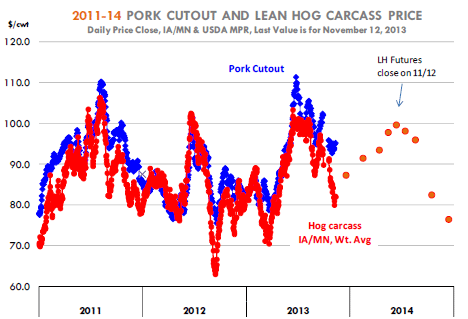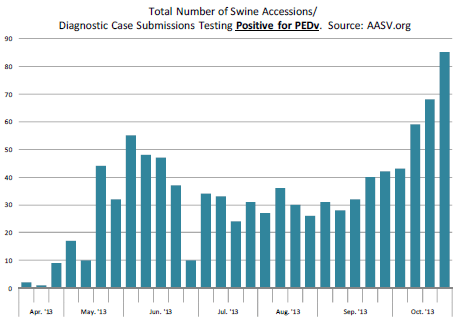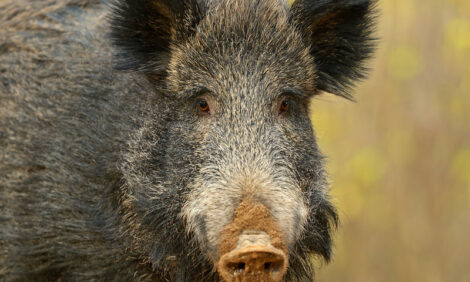



CME: Lean Hog Futures Drift Lower; Steady in Overnight Trading
US - Nearby lean hog futures drifted lower and were for the most part steady in overnight trading, write Steve Meyer and Len Steiner.In the short term, market participants continue to focus on seasonal factors, heavy carcass weights and increased supply of hogs available for marketing. Hog weights have exploded since mid October, coincident with the availability of fresh corn and cool fall temperatures. The latest MPR data (report LM_HG201) pegs average hog weights at almost 213 pounds. This includes both producer and packer owned hogs.
The average weight of producer sold hogs was pegged at 211.62 pounds. For the last five days, producer sold hogs have averaged 211 pounds and all hogs have averaged 212.3 pounds. So we are looking at a 3 per cent increase in hog weights and the seasonal tendency is for weights to continue to climb through the end of November. There is some pressure on producers to accelerate marketings to bring weights under control but one needs to also recognize the incentives at play.
Lower feed costs have reduced significantly the marginal cost of adding weight on hogs. Also, some producers are faced with fewer pigs than they would normally have due to the losses associated with PEDv. Hog slaughter normally increases at this time of year and we expect weekly slaughter to be just a little under 2.3 million head for the week, down about 3.4 per cent from a year ago but the largest weekly slaughter so far this year.
Normally this is the time of year when packer margins are best and the latest USDA numbers show that. Packers also have benefited from a notable improvement in consumer demand for pork. Hog supplies are steady to slightly lower than a year ago and yet pork prices are significantly higher than last year. The pork cutout closed last night at $95.24/cwt., up about $1.4/cwt from a week ago and $11/cwt (+13 per cent) compared to year ago levels.
Some of the year/year increase is due to the change in how the cutout is calculated with MPR data. That new calculation methodology adds about $4/cwt to the current cutout. Even when we adjust for that, the cutout is about 9 per cent higher than a year ago. While prices for loins and buts are up compared to last year, packers have benefited the most from sharply higher prices for hams.

The ham primal value is currently up 34 per cent compared to last year and the benchmark #23-27 bone-in ham price has been hovering above 90 cents recently, compared to 75 cents a year ago. About half of the increase in the value of the cutout has come from the improvement in ham pricing. Normally ham prices are a bit softer in the last two weeks of November before spiking higher ahead of Christmas. So far, however, there has been little weakness, helping underpin the overall cutout.
But even as the day to day seasonal pressures have negatively impacted the nearby market, out front the main concern, and biggest risk, remains the impact of PEDv disease on the flow of hogs coming to market. The chart below shows that the number of diagnostic cases testing positive for PEDv increased sharply in October.

The last week of October had about double the number of cases we saw in May and June. It would appear that the worst impact of the disease is ahead of us. And given the 5-6 month lag, spiking PEDv cases in the winter could constrain supplies in late spring and summer, a time of year when hog numbers seasonally decline.
The uncertainty comes from the fact that despite reports from AASV, it is unclear how many hogs have indeed been infected and what is the survival rate. At this point, the market is left guessing and the guess is that despite $4 corn, we could still see $100 hogs this summer, promising excellent margins for those with hogs to sell.








